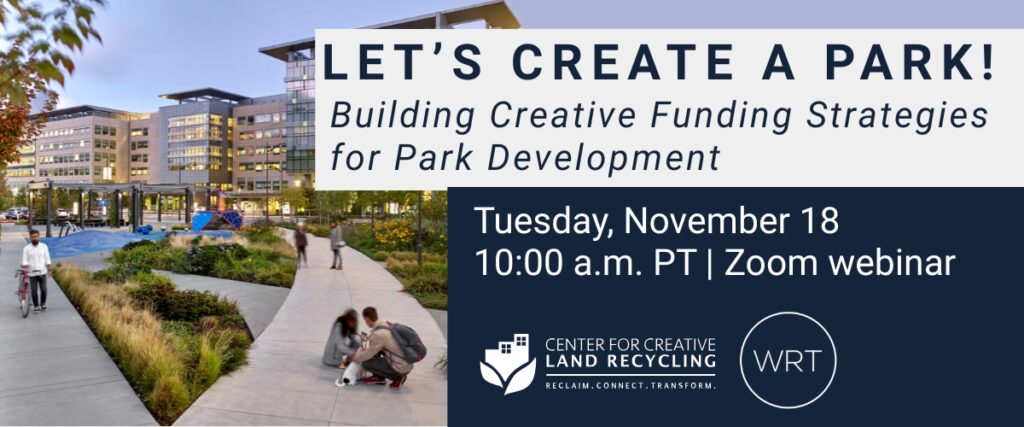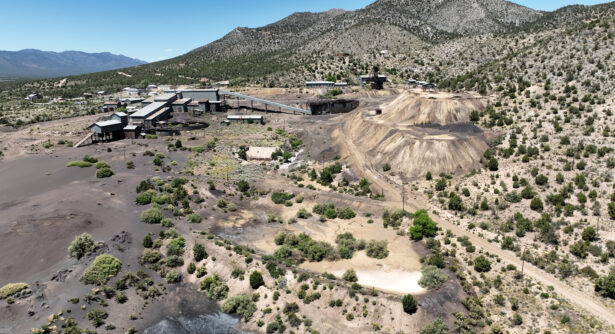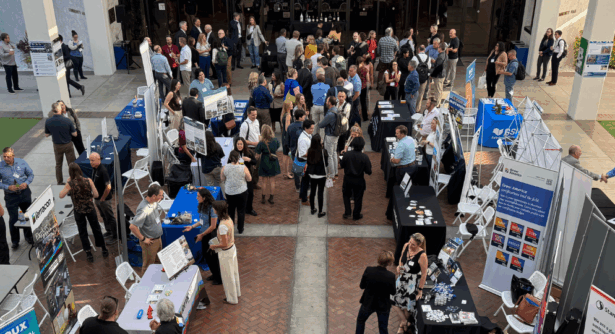
Turning Brownfields Into Parks: Nature-Based Solutions and Community Resilience
Across the country, communities are wrestling with contaminated land — former factories, railyards, and vacant lots that divide neighborhoods and burden local economies. Yet increasingly, these “brownfields” are being reimagined as parks, wetlands, and community green spaces that heal both land and people. This new era of park creation sits at the intersection of nature, infrastructure, equity, and science; helping communities transform forgotten ground into living infrastructure for resilience.
When a brownfield becomes a park, it offers something few other sites can: the chance to restore degraded land while supporting ecosystems and community well-being. Because these parks are designed for long-term ecological and public use, they can accommodate the slower, more natural processes of cleanup and regeneration. Microbial communities, fungi, and plants are given time to break down pollutants, rebuild soil health, and prepare the land for safe, vibrant reuse. In short, nature gets to do its work — and people benefit.
From Contamination to Community Asset

India Basin Shoreline Park in San Francisco alleviated flood risk in addition to creating a park
Every transformation begins with understanding the land — not just its contamination, but its ecological potential. That means investigating the site’s industrial history, testing soil and groundwater, and mapping environmental risks like flooding or heat islands. Community listening sessions help identify what neighbors value most: shade, safety, access, habitat, or recreation; as well as potential hazards the park can help solve, such as frequent flooding or extreme heat. The data and dialogue together reveal how nature-based strategies can repair harm and strengthen resilience.
At this stage, remediation merges with regeneration. Phytoremediation uses deep-rooted plants to pull contaminants from the soil. Mycoremediation employs fungi to digest hydrocarbons and toxins. Compost and biochar restore soil structure and microbial life. Bioswales, rain gardens, and constructed wetlands absorb and filter stormwater, cooling neighborhoods. Together, these techniques show that cleanup and climate adaptation can be the same process — not separate goals.
Funding for the Future
Turning contaminated land into a park requires vision and a smart funding strategy. CCLR and park design firm WRT’ have created Let’s Create a Park! with step-by-step guidance on how to develop a creative funding strategy for successful park development. Traditional park financing—through bonds or general funds—rarely covers the complex needs of remediation and redevelopment. Fortunately, brownfield parks qualify for a diverse mix of environmental, climate, and infrastructure funding streams. Cleanup grants from the U.S. EPA can be paired with California Parks or FEMA Building Resilient Infrastructure and Communities (BRIC) funds. Urban forestry programs, flood-resilience initiatives, and environmental justice block grants can all play a role. When a park functions as stormwater infrastructure, carbon sink, and heat refuge, funders see it as a climate and public-health investment—not just recreation space.
Register Now for the Upcoming Webinar on How to Build a Creative Park Funding Strategy
Partnership and Workforce
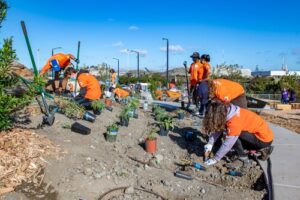
Workforce Development grants can help train/employ residents to assist with park-related projects
These parks also create opportunities for economic mobility and education. Local residents can be trained in soil testing, GIS mapping, and green infrastructure maintenance. Universities can partner on bioremediation pilots, while schools gain outdoor classrooms for studying ecology and climate. Through collaboration with community groups and environmental organizations, brownfield parks can cultivate a new green workforce — one that restores the land while strengthening local capacity and pride.
Stewardship for the Long Game
A brownfield-to-park transformation doesn’t end with ribbon-cutting. Long-term monitoring of soil and water, maintenance of green infrastructure, and community programming ensure the site remains healthy and inclusive. The most resilient parks are those where stewardship transitions to local hands — where neighbors host nature walks, manage native plant nurseries, and continue learning from the land.
Where Land Heals People — and People Heal Land
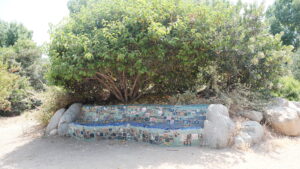
Park bench at Rio de Los Angeles State Park at Taylor Yards, a former railyard adjacent to the LA River
From Los Angeles’s Taylor Yard — a former rail yard now becoming a riverfront park with wetlands and bike paths — to smaller urban lots across the country, brownfield parks are redefining what renewal looks like. They are shade in heat-prone neighborhoods, buffers against flood and fire, and living classrooms for environmental justice. They remind us that cleanup can be an act of creation — one that restores ecosystems, strengthens communities, and honors the places we call home.
To learn more about the process and funding pathways for your own brownfield-to-park vision, join our upcoming CCLR webinar or reach out for direct support. Together, we can transform contaminated lands into spaces where nature thrives, people gather, and resilience grows.

